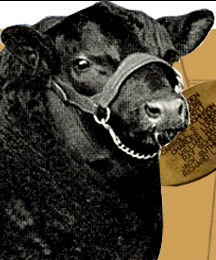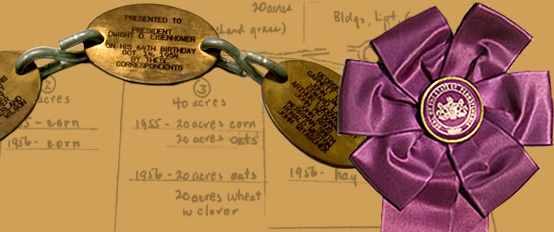FARM: Overview
Their retirement plans were interrupted in December 1950 when General Eisenhower assumed command of the North Atlantic Treaty Organization in Europe. The Eisenhowers turned to one of the General’s wartime staff officers, retired Brigadier General Arthur Nevins, and his wife, Ann, to maintain the farm in their absence. Nevins ran the farm as a dairy and egg operation while the Eisenhowers were overseas. Despite his absence, General Eisenhower maintained a great interest in his farm. He carried on a heavy correspondence with Nevins providing directions, suggestions, and comments on farm operations, while Nevins provided frequent reports on happenings at the farm. This arrangement continued after Ike was elected President of the United States in November 1952.
During the presidential years, friends purchased adjacent farms to protect the president’s privacy. Managed together as the Eisenhower Farms, the partnership ultimately had 495 acres to operate on. The Gettysburg farm served Ike as a refuge from the troubles of the Cold War world. His farm hands recalled that when the president arrived for a visit at his farm, he would barely take time to change shoes before eagerly walking over to visit his cattle and crops. Eisenhower’s success with restoring the soil of his farm and improving his cattle herd led to one of the most personally meaningful awards of his lifetime. The Pennsylvania State Farmer’s Association bestowed upon General Eisenhower their first “Honorary Master Farmer” award in July 1963.
Between 1954 and 1966, the Eisenhower Farm developed a nationally recognized show herd of Angus cattle as Ike and his partners tried their hands in the purebred business. By the time failing health forced General Eisenhower to sell his prize winning livestock; the Eisenhower herd had left a permanent mark on the specialized world of breeding beef cattle.
|






